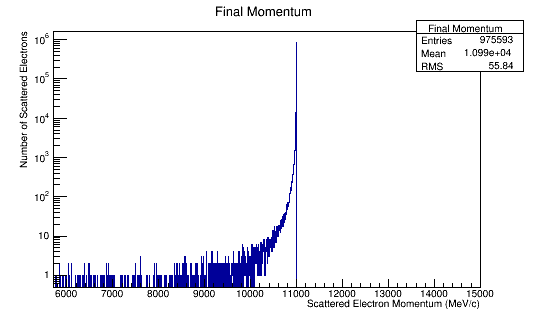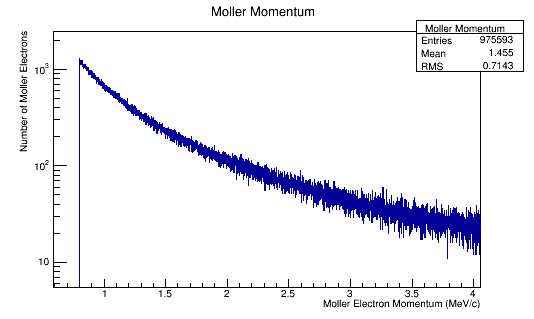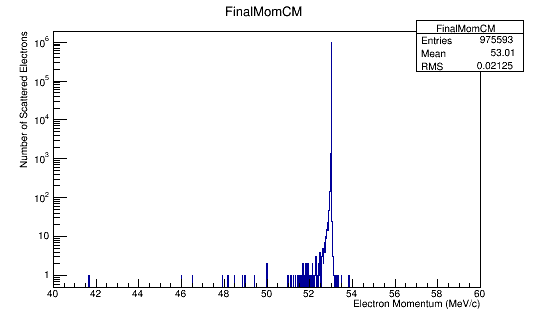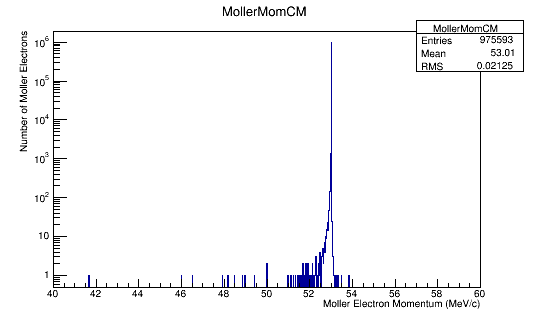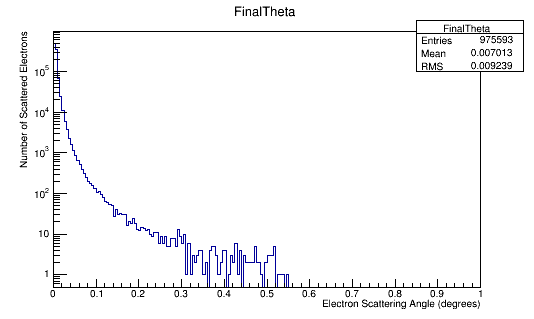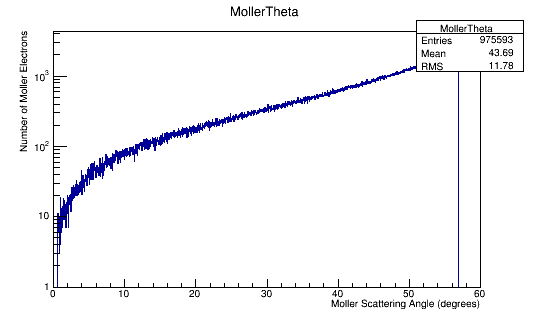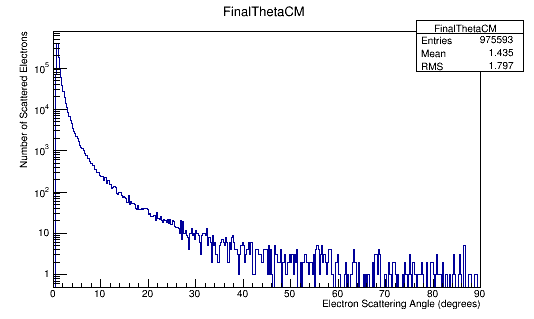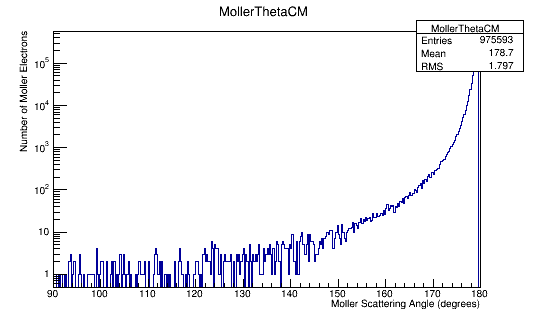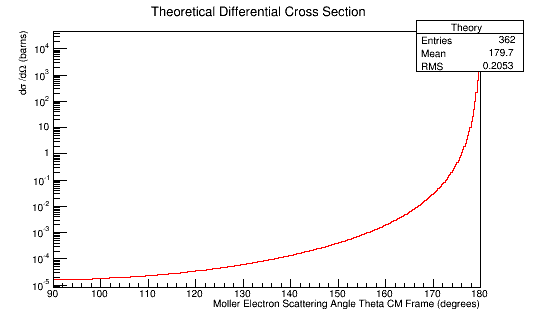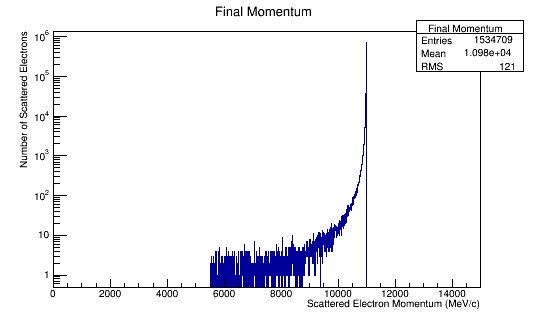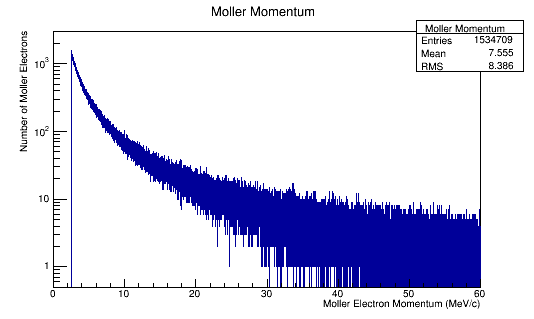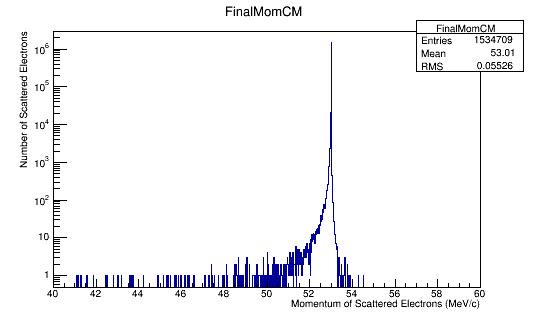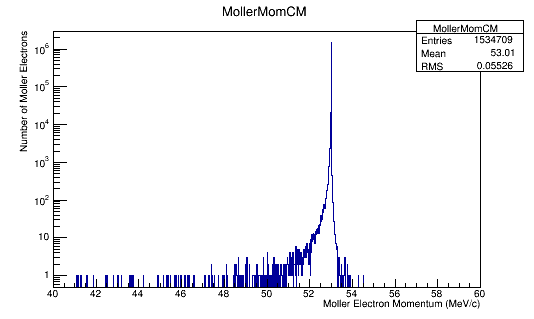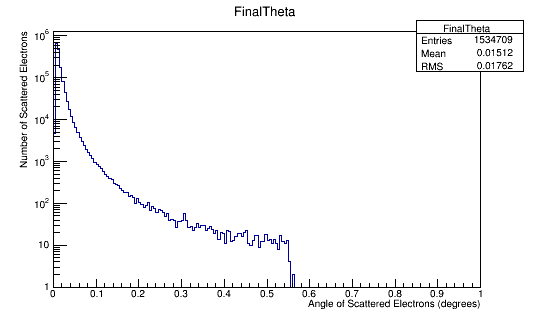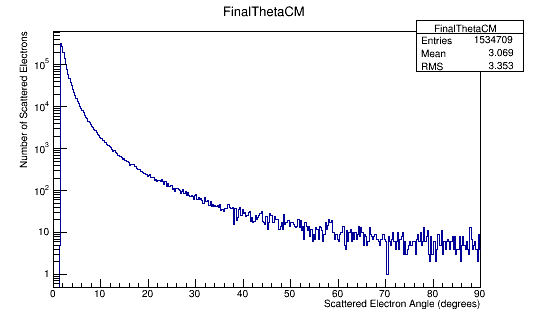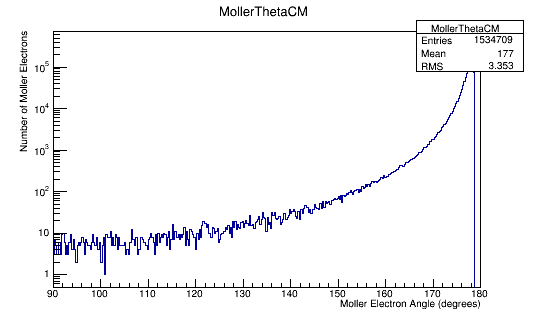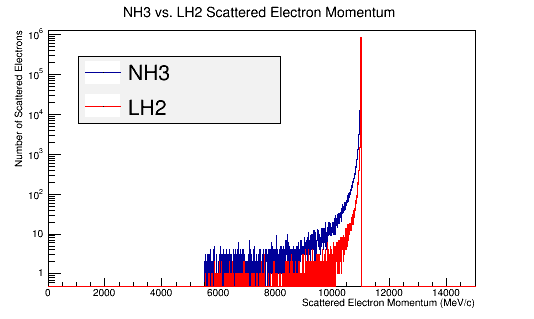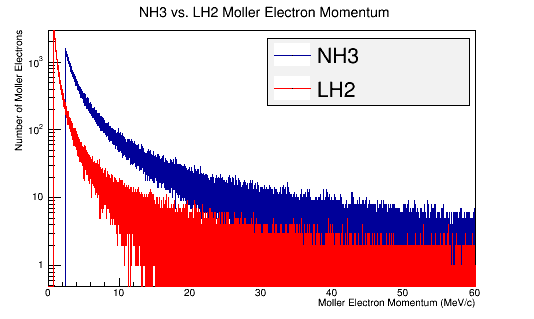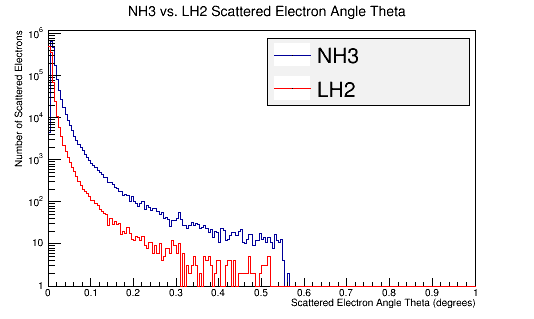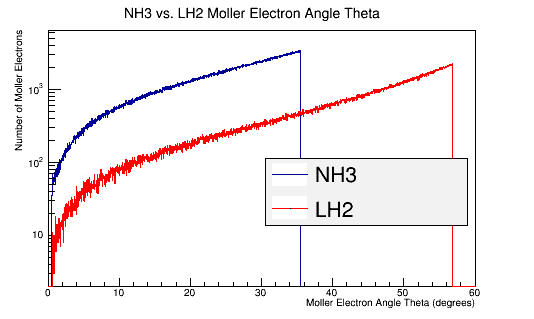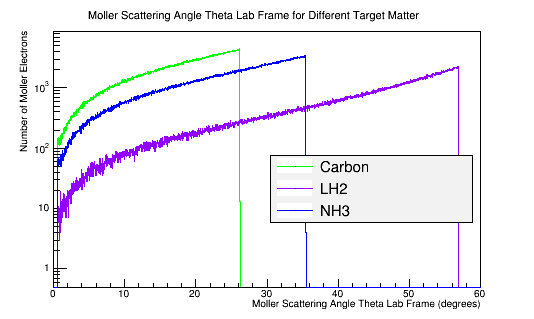DV RunGroupC Moller
Simulating the Moller scattering background for EG1
Step 1
Determine the Moller background using an LH2 target to check the physics in GEANT4
Incident electron energy varies from 1-11 GeV.
LH2 target is a cylinder with a 1.5 cm diameter and 1 cm thickness.
(Following dimensions listed on page 8 of File:PHY02-33.pdf)
Numbers Moller electrons per incident electron.
While 2nd and 3rd generations are created, only 2 2nd generation daughter particles are created for 1E6 incident particles. All knock on electrons are not counted.
Momentum distributions in the Lab Frame.
Momentum distributions in the Center of Mass Frame.
Estimated Momentum Distribution
In the collision of two particles of mass m_1 and m_2, the total energy in the center of mass frame can be written
In the frame where one particle (m2) is at rest
where in MeV
The velocity of the center of mass in the lab frame is
This gives the momenta of the particles in the center of mass to have equal magnitude, but opposite directions
For an incoming electron with momentum of 11GeV, we should find the momentum in the center of mass to be around 53 MeV which is confirmed in the the data/plots.
| KEi | Pxi | Pyi | Pzi | xi | yi | z1 | KEf | Pxf | Pyf | Pzf | xf | yf | zf | KEm | Pxm | Pym | Pzm | xm | ym | zm |
|---|---|---|---|---|---|---|---|---|---|---|---|---|---|---|---|---|---|---|---|---|
| 11000 | 0 | 0 | 11000.5 | 0 | 0 | -510 | 10999.1 | 0.433025 | -0.858867 | 10999.6 | 0 | 0 | -509.276 | 0.905324 | -0.433025 | 0.858867 | 0.905366 | 0 | 0 | -509.276 |
Changing the code for the total Energy to in the lab frame gives
Angular Distribution in the Lab Frame
Angular Distribution in the Center of Mass Frame
Comparing experimental vs. theoretical for Møller differential cross section 11GeV
Using the equation from [1]
This can be simplified to the form
Plugging in the values expected for a scattering electron:
Using unit analysis on the term outside the parantheses, we find that the differential cross section for an electron at this momentum should be around
Using the conversion of
We find that the differential cross section scale is
Converting the number of electrons to barns,
where ρtarget is the density of the target material, ltarget is the length of the target, and iscattered is the number of incident particles scattered.
Combining these plots, and rescaling the Final Theta in the Center of Mass for micro-barns, we find
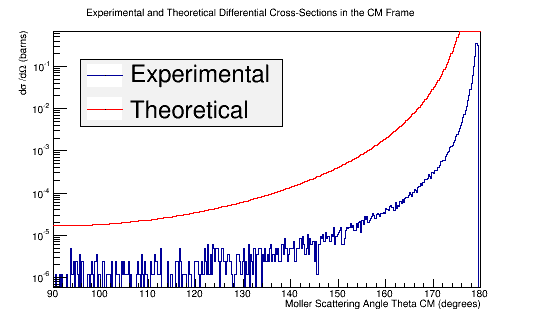
Step 2
Replace the LH2 target with an NH3 target and compare with LH2 target.
LH2 Vs. NH3
Figure out the offeset
Rerunning the GEANT simulation for a target of solo atoms of Carbon 12, with 4^{10} incident 11GeV electrons
Step 3
Determine impact of Solenoid magnet on Moller events
Papers used
[1]Farrukh Azfar's Derivation of Moller Scattering
A polarized target for the CLAS detector
An investigation of the spin structure of the proton in deep inelastic scattering of polarized muons on polarized protons
